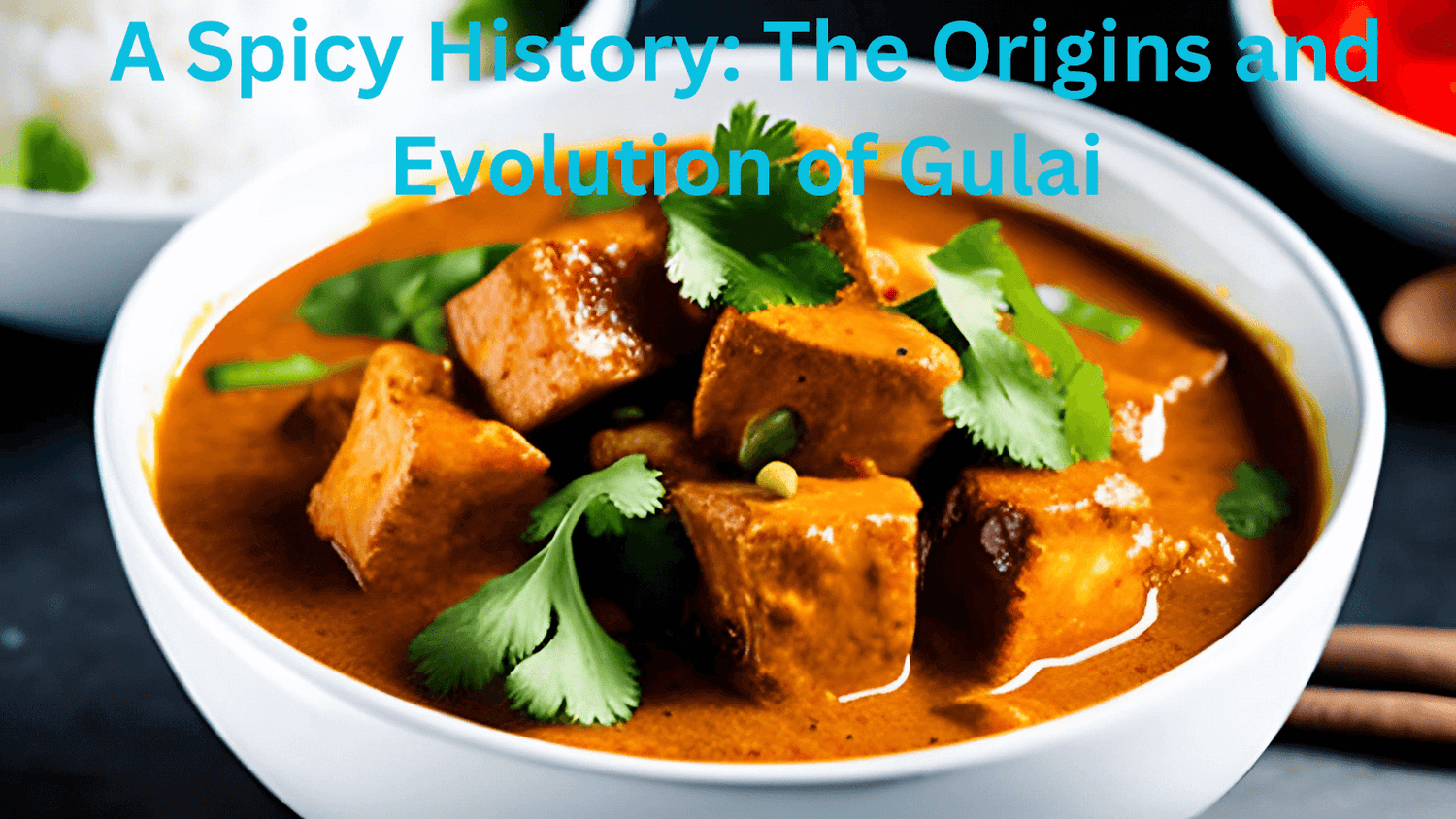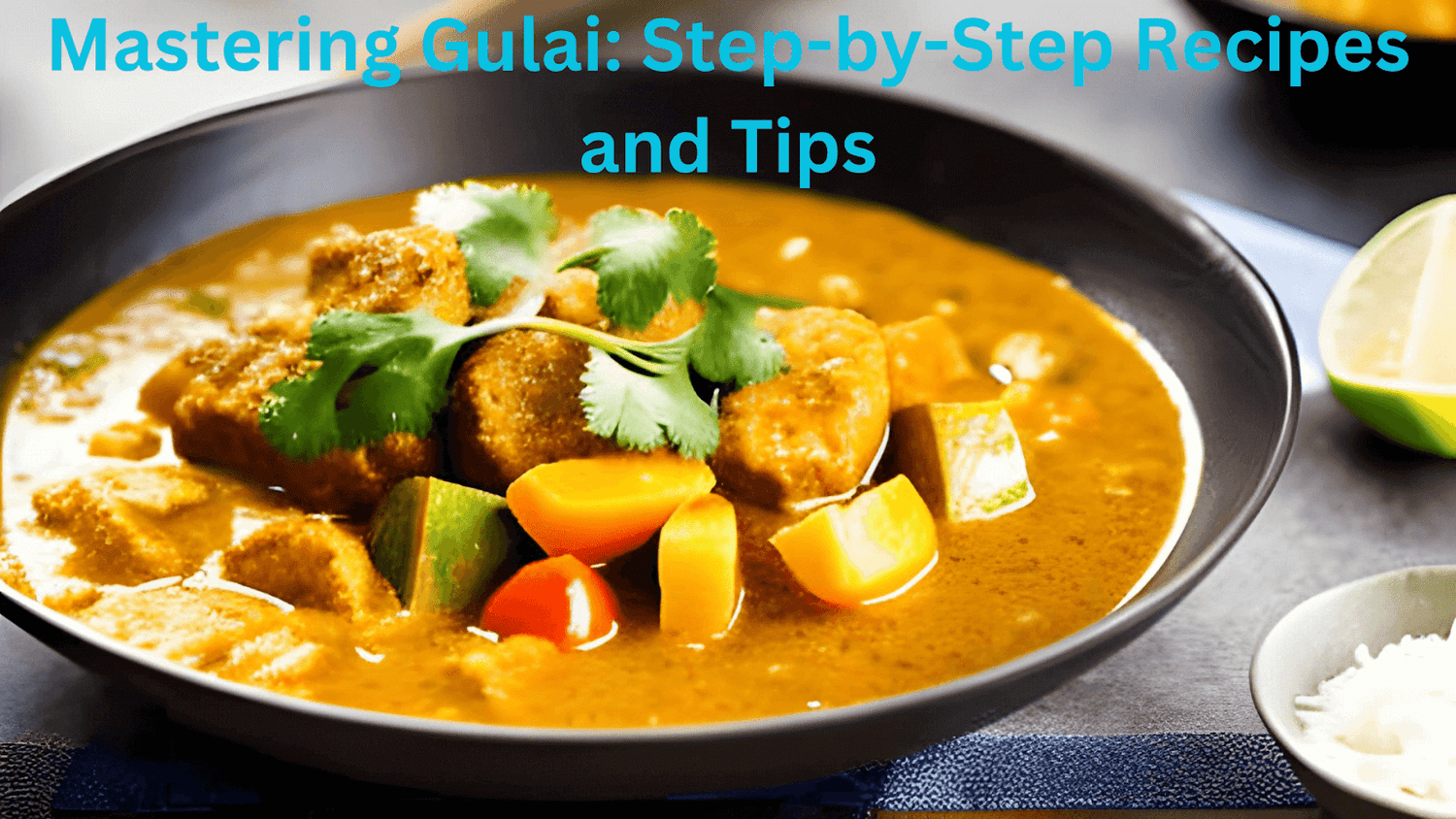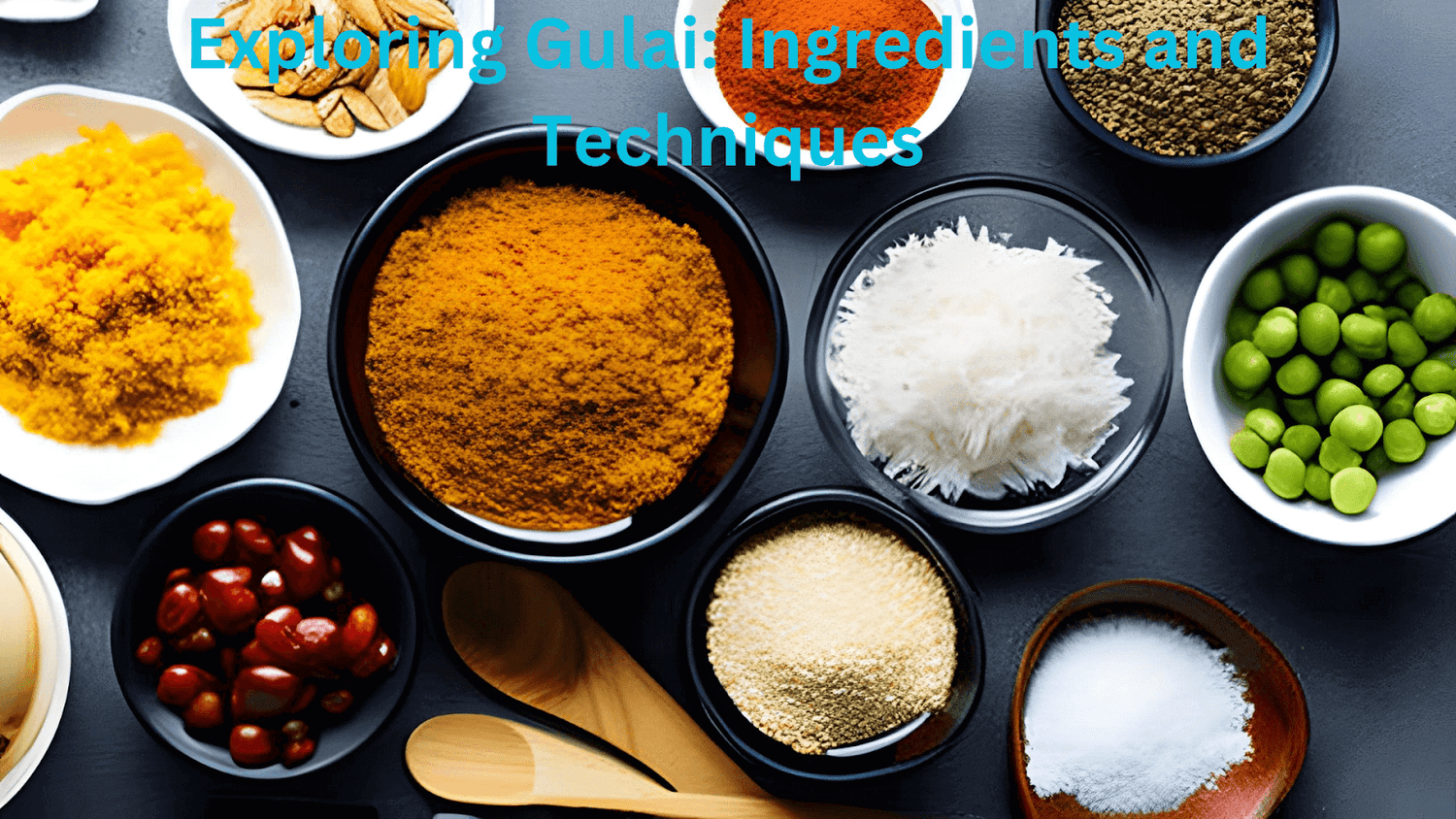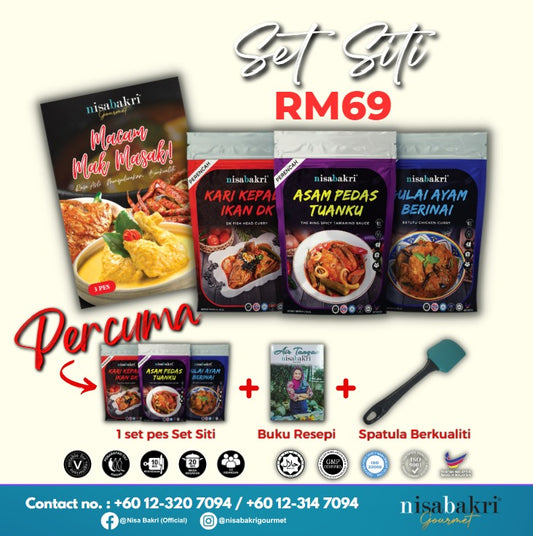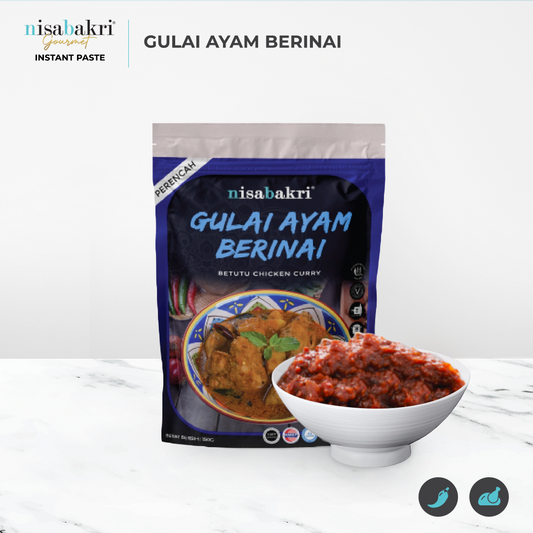Spices and Flavors of Indonesia: Exploring the World of Gulai
Gulai is a traditional Indonesian dish that is beloved for its rich and fragrant flavor. This dish typically features daging, fish, or vegetables that are cooked in a spicy and aromatic sauce made from a blend of spices, coconut milk, and other ingredients. Some of the most common spices used to flavor Gulai include turmeric, ginger, coriander, cumin, and lemongrass, which give the dish its distinctive and delicious taste.
Whether you are a fan of spicy food or simply looking to try something new and flavorful, Gulai is sure to delight your taste buds and provide you with a satisfying and delicious meal.
What is Gulai?
Gulai is a type of Indonesian curry that is typically made with daging, fish, or vegetables in a flavorful sauce made dari a variety of spices, coconut milk, and other ingredients. The dish is often characterized by its rich, fragrant, and slightly spicy flavor, and it is a popular dish in many parts of Indonesia.
The specific ingredients and preparation methods used to make Gulai can vary depending on the region of Indonesia in which it is prepared, but it is generally considered to be a hearty and satisfying dish that is often served with steamed rice or other traditional accompaniments.
What are the health benefits of Gulai?
Gulai, like many other Indonesian curries, is made with a variety of spices and ingredients that can offer several health benefits. Here are 3-5 potential health benefits of consuming Gulai:
Anti-inflammatory properties
Many of the spices used in Gulai, such as turmeric, coriander, and ginger, ada anti-inflammatory properties that may help reduce inflammation in the body. Chronic inflammation has been linked to several health conditions, including arthritis, heart disease, and cancer.
Digestive health
Some of the ingredients used in Gulai, such as lemongrass, may help promote digestive health by reducing inflammation in the digestive tract and promoting healthy gut bacteria. Additionally, the fiber in vegetables and legumes that are often added to Gulai can help promote regularity and prevent constipation.
Immune-boosting properties
Many of the spices used in Gulai, such as turmeric and ginger, have immune-boosting properties that may help strengthen the immune system and prevent infections.
Rich in nutrients: Gulai typically contains a variety of vegetables, legumes, and/or daging, providing a rich source of essential vitamins and minerals. For example, vegetables such as kale, spinach, and carrots contain high levels of vitamin A, while legumes such as chickpeas and lentils are rich in fiber and protein.
Low in processed ingredients: When made from scratch, Gulai can be a healthier alternative to processed and pre-packaged foods that often contain high levels of sugar, salt, and artificial ingredients. By using fresh, whole ingredients and spices, Gulai can provide a more nutrient-dense and healthful meal option.
How was Gulai made in different regions with resepi gulai?
1. Indian Curry
Indian curry is a popular dish that varies widely in terms of ingredients, cooking methods, and flavor profiles. It can be prepared with a variety of daging, vegetables, and spices and is often served with rice or bread.
Ingredients:
- 500g of meat or vegetables (chicken, lamb, potatoes, peas, etc.)
- 2 tbsp of vegetable oil
- 1 biji large bawang, chopped
- 3 cloves of garlic, minced
- 1-inch piece of ginger, peeled and minced
- 2 tomatoes, chopped
- 1 tsp of cumin powder
- 1 tsp of coriander powder
- 1 tsp of turmeric powder
- 1 tsp of chili powder
- Salt to taste
- 1 cup of water
- 2 tbsp of chopped cilantro
Instructions:
- Heat the oil in a large pot or Dutch oven over medium heat.
- Add the bawang, garlic, and ginger and sauté for 2-3 minutes until the onion is translucent.
- Add the tomatoes and cook for another 2-3 minutes until the tomatoes are soft.
- Add the cumin powder, coriander powder, turmeric powder, cili powder, and salt and stir well.
- Add the meat or vegetables and kacau well to coat them with the spice mixture.
- Add water and bring to a boil.
- Reduce heat to low, cover the pot, and simmer for 20-30 minutes until the daging or vegetables are cooked through.
- Sprinkle with cilantro before serving.
2. Southern Thai Curry:
Southern Thai Curry: Southern Thai curries are known for being spicy and full of flavor, often incorporating fresh herbs and seafood. These curries typically use coconut cream instead of coconut milk for a richer consistency, and are often made with fish or shellfish as the protein. The key ingredients used in Southern Thai curries include turmeric, galangal, lemongrass, and shrimp paste.
Ingredients:
- 2-3 tablespoons of Southern Thai curry paste
- 2 cans of coconut cream
- 1 lb of your choice of seafood (shrimp, mussels, or squid)
- 1 sudu of fish sauce
- 1 tablespoon of palm sugar
- 2 cups of mixed vegetables (such as green beans, bamboo shoots, and bell peppers)
Instructions:
- In a large pot, heat up 2-3 tablespoons of curry paste over medium heat hingga fragrant.
- Add 1 can of coconut cream to the pot and bring to a boil.
- Add your choice of seafood to the pot, along with 1 sudu of fish sauce and 1 tablespoon of palm sugar.
- Allow the mixture to simmer for about 10-15 minutes, until the seafood is fully cooked.
- Add the remaining can of coconut cream and 2 cups of mixed vegetables to the pot, and simmer for an additional 5-10 minutes.
- Serve hot with steamed rice.
What makes the Gulai by Nasibakrigourmet special?
Here are special things that make the Gulai spice blends and pastes by Nisabakri Gourmet stand out:
All-natural ingredients
Nisabakri Gourmet takes pride in using only high-quality, all-natural ingredients in their Gulai spice blends and pastes. This means that you can enjoy the authentic flavors of Indonesian cuisine without any additives, preservatives, or artificial flavors.
Authentic Indonesian recipes
The Gulai spice blends and pastes by Nisabakri Gourmet are made using traditional Indonesian resepi that have been passed down through generations. This means that you can experience the true and authentic flavors of Indonesian cuisine in the comfort of your own home.
Convenient and easy to use
Nisabakri Gourmet offers a wide range of Gulai spice blends and pastes that are easy to use and convenient for home cooks. The spice blends and pastes are pre-mixed and pre-measured, so all you need to do is add your preferred meat, vegetables or tofu, and cook according to the provided instructions.
Versatile
The Gulai spice blends and pastes by Nisabakri Gourmet can be used to make a variety of Gulai dishes, including Gulai Ayam, Gulai Ikan, and Gulai Kambing. You can also experiment with different ingredients and create your own unique variations of Gulai.
Support a small business
By purchasing Nisabakri Gourmet's Gulai spice blends and pastes, you are supporting a small and family-owned business that is dedicated to promoting and preserving the flavors of Indonesian cuisine.
Some popular Gulai Daging
Here are three popular Gulai dishes in Indonesian cuisine:
Gulai Ayam (Chicken Gulai)
This is one of the most popular variations of Gulai, made with ayam as the main ingredient. The ayam is typically slow-cooked in a blend of spices and coconut milk, resulting in a tender and flavorful dish that is rich and creamy. Some variations of Gulai Ayam may also include vegetables such as potatoes, carrots, and green beans.
Gulai Ikan (Fish Gulai)
This variation of Gulai features fish as the main ingredient. The fish is typically cooked in a blend of spices and coconut milk, resulting in a fragrant and flavorful dish that is slightly tangy and mildly spicy. Some popular types of fish used in Gulai Ikan include snapper, tuna, and catfish.
Gulai Kambing (Lamb Gulai)
This is a popular variation of Gulai made with lamb as the main ingredient. The lamb is typically slow-cooked in a blend of spices and coconut milk, resulting in a tender and aromatic dish that is mildly spicy and rich in flavor. Some variations of Lamb Gulai may also include vegetables such as potatoes, carrots, and green beans.
Overall, Gulai is a versatile and delicious dish that can be made with a variety of ingredients, making it a popular choice for Indonesian cuisine lovers around the world.
Conclusion
In conclusion, Gulai is a traditional Indonesian curry that is known for its complex blend of spices, rich creamy texture, and slow cooking method. It is typically served with steamed rice and a variety of side dishes such as Sayur Lodeh, Acar, and Kerupuk to balance out the flavors and textures of the main dish.
If you are looking to try authentic Indonesian cuisine at home, Nisabakri Gourmet offers a wide range of high-quality, all-natural Indonesian spice blends and pastes that are perfect for making Gulai and other Indonesian dishes. Their products are made with the freshest ingredients and are free from additives, preservatives, and artificial flavors. With Nisabakri Gourmet, you can experience the bold and delicious flavors of Indonesian cuisine in the comfort of your own home.
FAQ
1. What makes Gulai different from other Indonesian curries?
Gulai is a type of Indonesian curry that is known for its rich, creamy texture and complex blend of spices. While there are many different types of curries found throughout Indonesia, there are several key characteristics that set Gulai apart from other curries:
-
The use of turmeric: Turmeric is a key ingredient in Gulai and gives the curry its distinct yellow color. The turmeric is typically combined with other spices such as coriander, cumin, and cili pepper to create a flavorful and aromatic blend.
-
The use of coconut milk: Coconut milk is another important ingredient in Gulai and gives the curry its rich, creamy texture. The coconut milk also helps to balance out the spiciness of the curry and adds a subtle sweetness to the dish.
-
The inclusion of tamarind: Some variations of Gulai include tamarind juice or paste, which adds a tangy and sour flavor to the dish. The tamarind also helps to cut through the richness of the coconut milk and balances out the flavors of the spices.
-
The cooking method: Gulai is typically slow-cooked over low heat, allowing the flavors of the spices and other ingredients to meld together over time. This slow cooking process also helps to thicken the sauce and create a rich, creamy texture.
Overall, Gulai is a unique and flavorful curry that stands out from other Indonesian curries due to its use of turmeric, coconut milk, and tamarind, as well as its slow-cooking method.
2. Is it possible to make Gulai using vegetarian or vegan ingredients?
Yes, it is possible to buat Gulai using vegetarian or vegan ingredients. In fact, there are many variations of Gulai that are made without meat or ikan, and instead feature a variety of vegetables or tofu as the main ingredient.
To make a vegetarian or vegan version of Gulai , you can substitute the daging or fish with your preferred vegetables or tofu, such as potatoes, eggplant, carrots, green beans, tempeh, or tofu. You can also use vegetable broth instead of ayam or beef broth, and use plant-based milk such as coconut milk or soy milk instead of dairy milk.
The rest of the resepi Gulai remains similar, using a blend of spices such as turmeric, coriander, cumin, and chili pepper to create the flavorful curry-like sauce. Just be sure to check the ingredient list on any store-bought spice blends or pastes, as some may contain animal-derived ingredients such as shrimp paste or fish sauce. You can also make your own spice blend at home using vegan ingredients.
Overall, making a vegetarian or vegan version of Gulai is a great way to enjoy this delicious dish while still accommodating dietary preferences or restrictions.
3. What are some common side dishes that are traditionally served with Gulai ?
Gulai is a popular Indonesian dish that typically consists of meat or ikan cooked in a rich, spicy curry-like sauce made with a variety of spices, coconut milk, and sometimes tamarind juice. Traditionally, Gulai is served with steamed rice and a variety of side dishes to balance the flavors and textures of the main dish. Some common side dishes that are traditionally served with Gulai include:
-
Sayur Lodeh: A mixed vegetable stew made with coconut milk, tofu, and various vegetables such as carrots, green beans, and cabbage.
-
Acar: A pickled vegetable salad made with cucumbers, carrots, shallots, and cili peppers that are pickled in a mixture of vinegar, sugar, and salt.
-
Sambal: A spicy cili-based condiment that is often served alongside Gulai to add extra heat and flavor.
-
Kerupuk: A type of Indonesian cracker made dari starch and other ingredients such as shrimp, fish, or cassava. Kerupuk is typically served as a crunchy snack or side dish.
-
Telur Pindang: Hard-boiled eggs that are cooked in a broth made from spices, tea, and soy sauce. The eggs are then peeled and served cold as a side dish.
-
Urap: A mixed vegetable salad made with grated coconut, lime juice, and various vegetables such as green beans, bean sprouts, and spinach.
-
Nasi Kuning: A fragrant yellow rice dish made with coconut milk, turmeric, and other spices. Nasi Kuning is often served as a side dish to Gulai to add extra flavor and texture to the meal.
These are just a few examples of the many side dishes that are traditionally served with Gulai . The specific side dishes can vary depending on the region and the personal preferences of the chef or cook.
4. Can Gulai be made ahead of time and reheated later?
Yes, Gulai can be made ahead of time and reheated later. In fact, many people believe that Gulai tastes even better the next day as the flavors have had time to meld together. To store Gulai, allow it to cool to room temperature, then transfer it to an airtight container and store it in the refrigerator for up to three days. When reheating Gulai , you can do so on the stovetop over medium heat, stirring occasionally until heated through.
Alternatively, you can reheat it in the microwave by placing it in a microwave-safe container and heating it in 30-second intervals until it reaches the desired temperature. Just keep in mind that because Gulai contains coconut milk, it may thicken slightly when stored in the refrigerator. If this happens, simply add a little water or coconut milk to thin it out before reheating.
